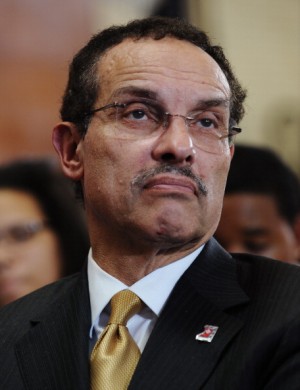DCentric’s D.C. Budget Highlights: What’s Cut, What’s Not

scienceoftheinvisible.blogspot.com / Flickr
Mayor Vincent Gray unveiled his $9.4 billion proposed budget last week, which outlines millions of dollars in cuts to social services.
The city anticipates a $172 million shortfall next year, and Mayor Gray wants to fill the gap mostly through cuts — about $102 million worth of them — while raising the remaining $70 million. The D.C. Council will spend the next couple of months digesting, debating and changing the budget before finally voting on it.
Let’s take a look at a few highlights:
No new taxes
Last year’s budget battle included a debate over whether to create a new tax bracket for wealthier residents. The council eventually approved a new tax bracket for households making more than $350,000 a year. This time around, Mayor Gray isn’t suggesting further raising taxes on the wealthy to balance the budget. Instead, he’s looking to make money by extending the hours alcohol can be sold and expanding the traffic camera program.
Healthcare
The DC Healthcare Alliance provides insurance for the approximately 20,000 low-income D.C. residents not covered by Medicaid. Mayor Gray proposes cutting $23 million from the program, transforming it from offering comprehensive coverage to just primary, preventative care.

Mandel Ngan / AFP/Getty Images
Mayor Vincent Gray.
Housing
The money to build and renovate affordable housing units comes from the Housing Production Trust Fund. It’s also where tenants turn to for low-cost loans to purchase their buildings when landlords put them up for sale. Tenant purchase is often cited as a way to prevent displacement of low-income renters in the face of gentrification. Mayor Gray proposes taking $19.9 million from the trust fund and using it for low-income rent subsidies instead, which is in really high demand.
Economic development and jobs
Mayor Gray proposes boosting economic development funding, including $58 million of infrastructure investments at St. Elizabeths in Ward 8, future home the U.S. Department of Homeland Security. The redevelopment is expected to reinvigorate the economically depressed area by bringing in thousands of jobs.
The District has also had problems training residents for jobs; Mayor Gray proposes a $1.6 million pilot program intended to better connect residents with jobs.
The wish list
The budget does include a “revised revenue priority list,” essentially a wish list of items that will be funded if more money is brought in than projected. And most of those programs benefit the city’s neediest residents, including $7 million for homeless services, $14.7 million to pay for Temporary Aid for Needy Families (formerly known as welfare) job programs and restoring the cuts made to healthcare and housing.






